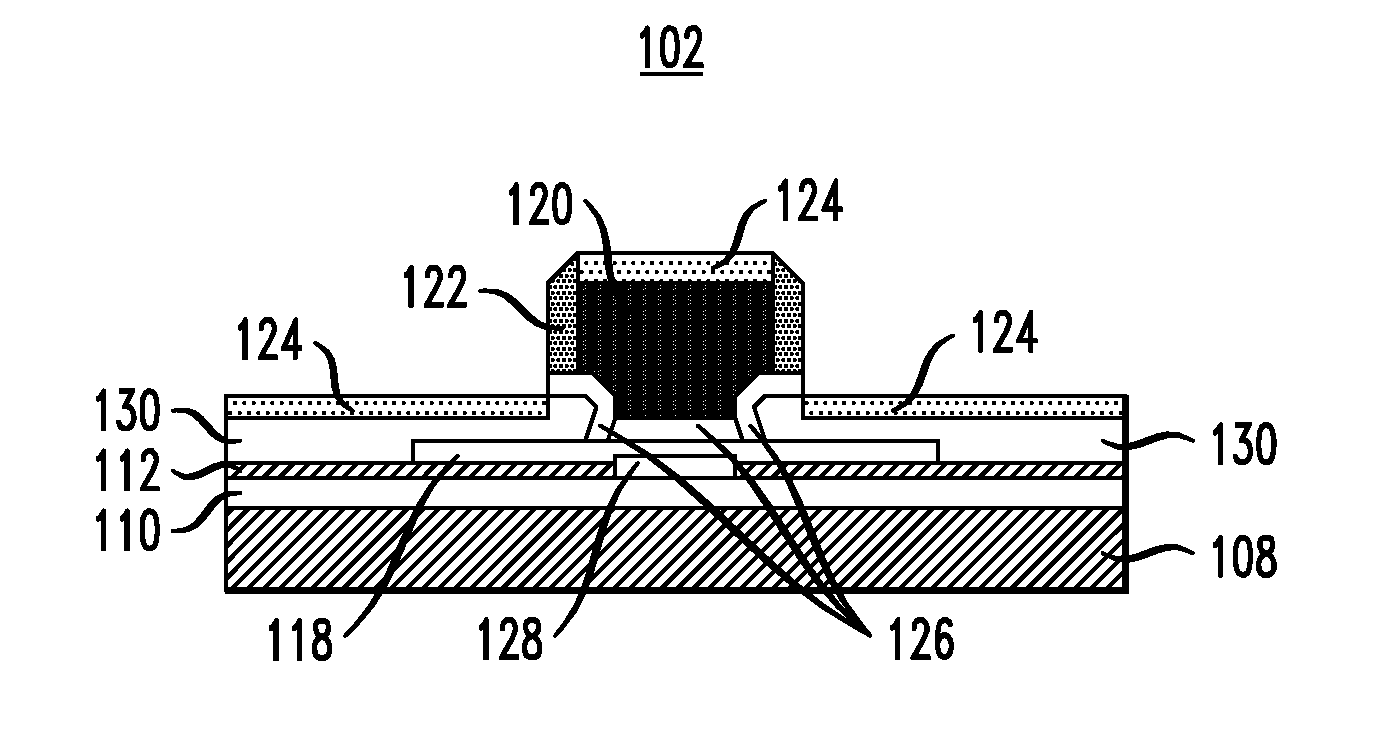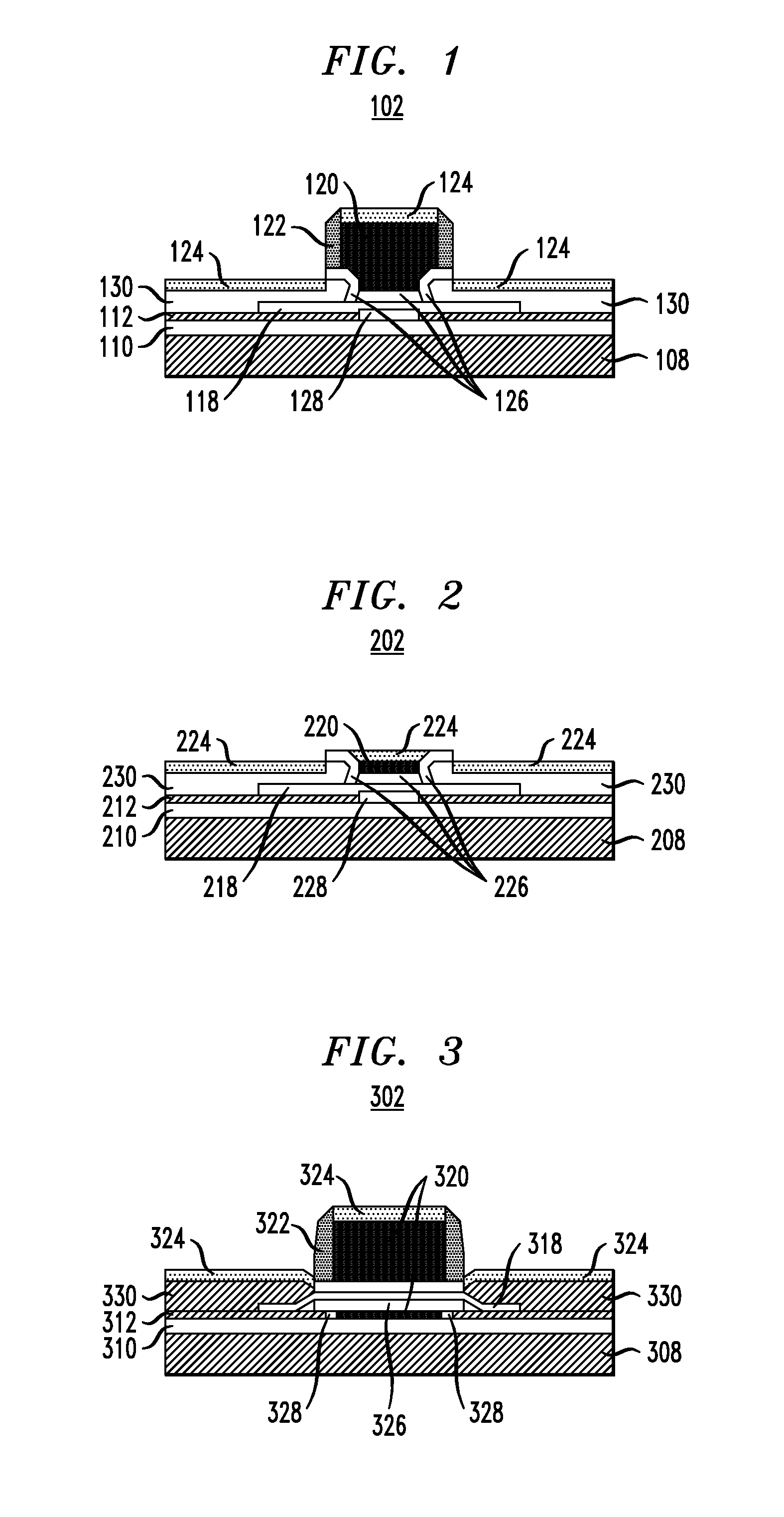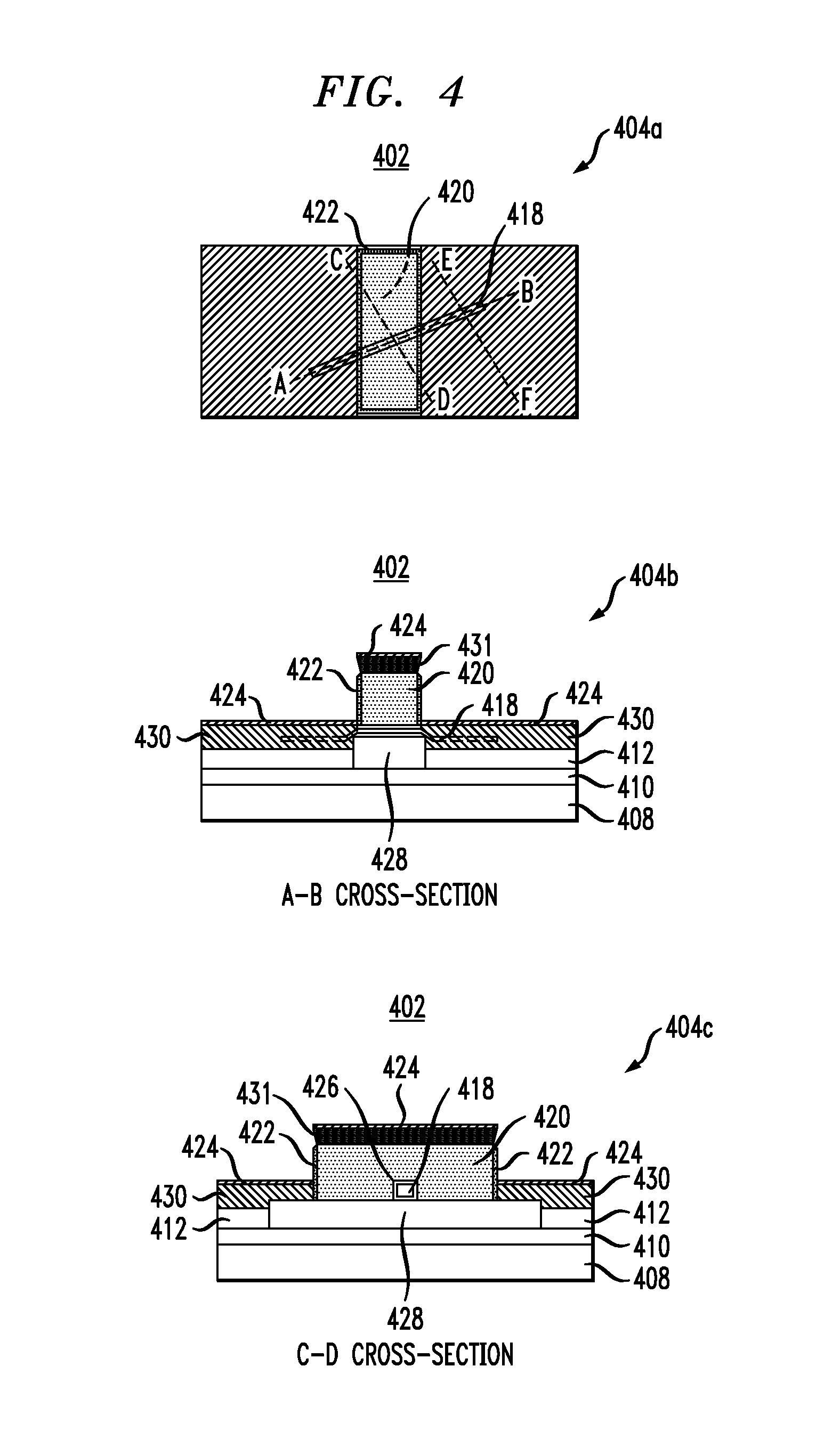Techniques for Fabricating Nanowire Field-Effect Transistors
a field-effect transistor and nanowire technology, applied in the field of field-effect transistors, can solve the problems of difficult in-situ doping of nanowires during their growth, integrating nanowires into fet devices, and heavy in-situ doping
- Summary
- Abstract
- Description
- Claims
- Application Information
AI Technical Summary
Benefits of technology
Problems solved by technology
Method used
Image
Examples
Embodiment Construction
[0030]FIG. 1 is a diagram illustrating exemplary field-effect transistor (FET) 102 having a nanowire channel. For ease of depiction, the structures shown illustrated in FIG. 1 are not drawn to scale. Further, the cross-sectional view shown in FIG. 1 depicts a FET having a single nanowire channel. It is to be understood, however, that FET 102 may comprise multiple nanowire channels. For example, multiple nanowire channels can be used in applications requiring a higher current drive.
[0031]Namely, FET 102 comprises semiconductor substrate 108 having buried oxide (BOX) layer 110 and silicon-on-insulator (SOI) layer 112 over BOX layer 110. According to an exemplary embodiment, substrate 108 comprises silicon (Si). Optionally, substrate 108 can be doped if back-gating of the nanowire channel is desired. Namely, according to an exemplary embodiment (not shown), the substrate is conductive and serves as a gate conductor. BOX layer 110 can have a thickness of between about five nanometers (n...
PUM
 Login to View More
Login to View More Abstract
Description
Claims
Application Information
 Login to View More
Login to View More - R&D
- Intellectual Property
- Life Sciences
- Materials
- Tech Scout
- Unparalleled Data Quality
- Higher Quality Content
- 60% Fewer Hallucinations
Browse by: Latest US Patents, China's latest patents, Technical Efficacy Thesaurus, Application Domain, Technology Topic, Popular Technical Reports.
© 2025 PatSnap. All rights reserved.Legal|Privacy policy|Modern Slavery Act Transparency Statement|Sitemap|About US| Contact US: help@patsnap.com



